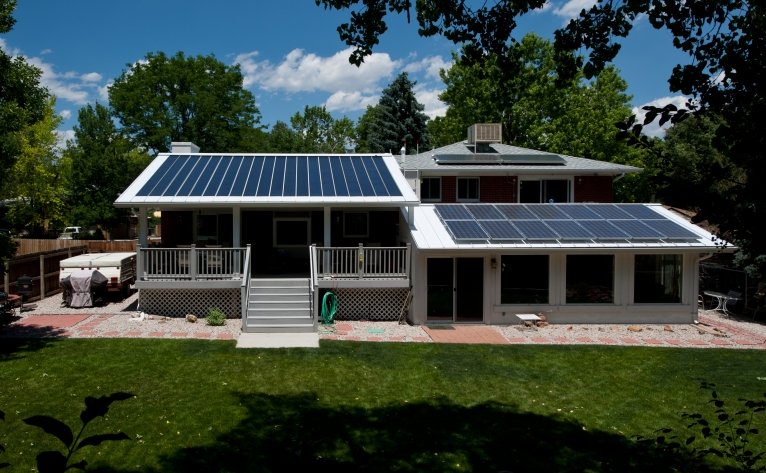Efficiency
Optimizing Energy Use: A Blueprint for the Future
Fight High Gas Prices: 7 Proven Ways to Improve Your Car’s Fuel Efficiency

With gas prices consistently rising, improving your vehicle's fuel efficiency is one of the most effective ways to save money at the pump, without trading in your car.
While fuel economy is often a key factor when buying a new vehicle, many drivers overlook simple, actionable steps they can take to maximize their current car’s performance and reduce fuel consumption.
Contrary to popular belief, fuel efficiency isn’t just the responsibility of automakers or mechanics. Drivers play a crucial role in how efficiently their vehicles use fuel. In fact, according to the U.S. Department of Energy (DOE), adopting smart driving habits and performing regular maintenance can improve fuel economy by up to 40% in some cases.

Here are seven science-backed, practical strategies to boost your car’s fuel efficiency and keep more money in your pocket:
1. Drive Smoothly and Shift Gears Efficiently
Aggressive acceleration, rapid braking, and excessive speeding can lower your fuel economy by 15–30% on highways and city roads, respectively (U.S. DOE). Driving smoothly, gradually accelerating and anticipating stops, reduces fuel waste. For manual transmission vehicles, shifting to higher gears as soon as possible (without lugging the engine) helps maintain optimal fuel efficiency. Most modern cars perform best when shifted between 1,500 and 2,500 RPM.
2. Follow Your Owner’s Manual
Your car’s owner’s manual is designed to help you operate the vehicle efficiently. It provides recommended gear shift points, optimal tire pressure, service intervals, and driving tips tailored to your specific model. Ignoring this guidance can lead to avoidable fuel waste and increased wear on components.

3. Use Air Conditioning Wisely
Air conditioning increases engine load and can reduce fuel efficiency by up to 20% in older or smaller-engine vehicles (Environmental Protection Agency - EPA). At low speeds (under 40 mph), opening windows is usually more efficient than using AC. However, at highway speeds, open windows create aerodynamic drag, which can decrease efficiency more than running the AC. The sweet spot? Use AC sparingly and switch it off when not needed.
4. Maintain Proper Tire Pressure
Underinflated tires increase rolling resistance, forcing your engine to work harder and consume more fuel. The National Highway Traffic Safety Administration (NHTSA) estimates that underinflated tires can lower gas mileage by 0.2% for every 1 psi drop in pressure across all tires. Check your tire pressure monthly and inflate them to the manufacturer’s recommended level—usually listed on the driver’s side door jamb or in the manual.
5. Reduce Excess Weight and Remove Roof Racks
Every extra 100 pounds in your car can reduce fuel economy by up to 1% (DOE). Remove heavy items you don’t need, such as sports equipment, tools, or cargo carriers. Roof racks and bike mounts also create wind resistance, decreasing highway fuel efficiency by up to 25%, depending on speed and design. Remove them when not in use.

6. Keep Up with Routine Maintenance
A poorly maintained engine can significantly reduce fuel efficiency. Regular services like oil changes, air filter replacements, and spark plug checks ensure your engine runs cleanly and efficiently. A clogged air filter, for example, can reduce fuel economy by up to 10% in older vehicles with carbureted engines (EPA).
7. Avoid Idling
Idling gets 0 miles per gallon. Modern engines do not require prolonged warm-ups, even in cold weather. If you’re stopped for more than 30–60 seconds (except in traffic), turning off the engine saves fuel and reduces emissions. Many newer vehicles come equipped with “start-stop” technology to automate this process.
Bonus Tip: Plan and Combine Trips
Cold starts use more fuel because engines run less efficiently until warmed up. Combining errands into fewer, longer trips keeps the engine warm and reduces overall fuel consumption.
Conclusion: Small Changes, Big Savings
Improving your car’s fuel efficiency doesn’t require expensive upgrades or a new vehicle. By adopting smarter driving habits, staying on top of maintenance, and making small behavioral adjustments, you can significantly reduce fuel costs and environmental impact. With gas prices volatile and likely to remain high, taking control of your car’s efficiency is both financially savvy and environmentally responsible.
Sources:
- U.S. Department of Energy (energy.gov)
- Environmental Protection Agency (epa.gov)
- National Highway Traffic Safety Administration (nhtsa.gov)
Start today, your wallet (and the planet) will thank you.

Equals Reduction And Responsible Waste Management
Efficiency: Imagine that if at the grocery store the person bagging your purchases left empty, unused spaces in each bag causing you to carry 10 instead of 5 bags out to your car then into your home. You would be investing some extra time, energy and space when it was unnecessary. Now transfer that thought to the waste and recycling industry.
Instead of filling a trash bag or bin with large empty spaces, we can all do some simple acts to help keep transportation costs down while reducing fossil fuel consumption and saving ourselves some time and money. The flattening of boxes greatly increases space efficiency in a bin.
This does not just apply to cardboard boxes, but also includes any paperboard (cereal or pet food) ones as well. Crushing cans before recycling is much more easily done if it is possible to remove both the top and bottom lids first. Foil products are easily flattened by hand. Periodically crush your garbage bag down to its true size – you will find that it does not need to be placed on the curb as often. Fewer trips to the dump means less fossil fuel consumed and reduced curbside idling – idling is known to be terribly inefficient and more polluting than vehicles on the move.
Garbage collection fees are more easily maintained by the company due to reduced costs per bag, and some companies even offer a discount for those who produce less waste. Also worth noting is that the household will go through fewer plastic garbage bags. Some kitchen waste disposal units tend to put unnecessary pressure on overtaxed sewage plants.

A much better option is to practice composting or vermiculture methods instead. Composting organic waste reduces household trash by approximately 30%. Go one step further by reusing various plastic bags to isolate smelly meat, bones and pet waste. By controlling odors in the garbage, the bag will not have to be put out on the curb as often.
So, imagine that if your waste and recycling was now half the size that it typically was before. That means in theory the waste pickup service would decrease costs by 50%, the landfill would be receiving half of what it used to, fewer trips to the recycling depot, less pollution…Well you get the picture. It is easy to make a difference and we can all start at home. Right where we are. Charles Friedo Frize
Save Energy - Are You Energy Aware?
Belief System - What Does Yours Stand For?
Browse Some More Of Our Great Topics
Tweet
Follow @Charlesfrize











